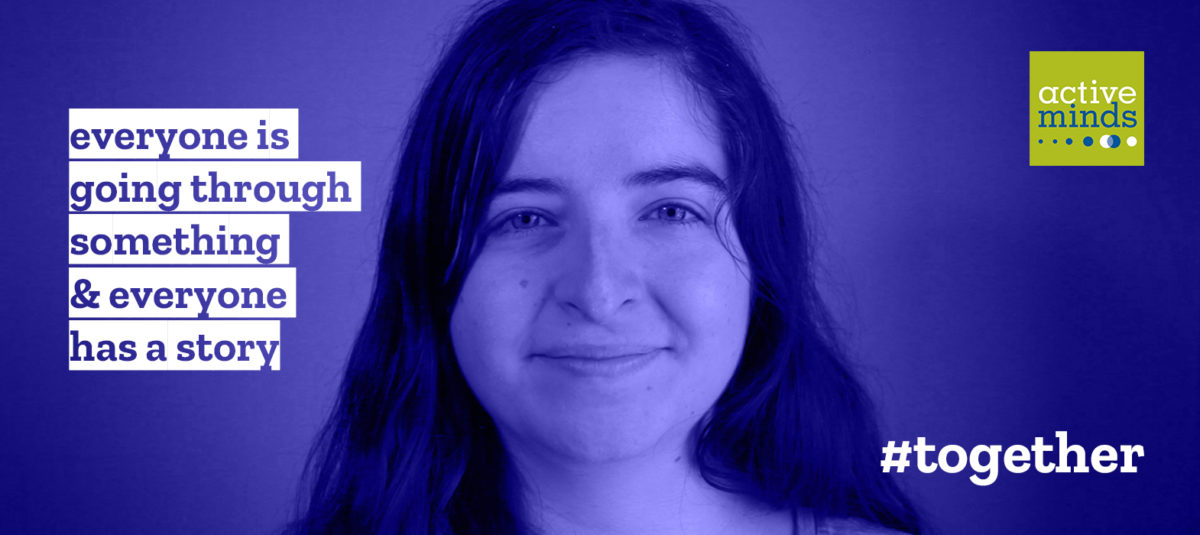Disclaimer: This post provides information regarding Netflix’s popular series 13 Reasons Why. Due to triggering and graphic content, Active Minds recommends that those who choose to watch do so with a friend or family member. We also recommend avoiding S1E13 (TW: suicide) and S2E13 (TW: sexual assault).
Often, we hear about mental health only after tragedy, and the past few weeks have been no exception. Headlines in prominent publications are asking important questions for which we need answers:
Where’s the line for a student’s privacy when they’re struggling? If someone on campus notices signs of distress in a student, what obligation do they have to tell someone, and who should they tell? What are the roles/rights of a parent when their college student is technically an adult? After a devastating event at a school, such as a suicide or shooting, how does a campus heal and what should they be thinking about related to mental health?
Exploring these questions and more, Netflix has released Season 2 of their controversial yet popular series 13 Reasons Why. A key character opens the season with the following thought: “If we don’t talk about it, it’s never going to change. It’s important that people learned what happened. The whole story.” But prior to Season 2, 13 Reasons Why had not yet educated us on “the whole story.”
While spurring a desperately needed, public conversation about suicide among millions of people, Season 1 missed the mark to a significant degree by graphically and unnecessarily showing a suicide on-screen; by avoiding discussion of the role mental health often plays in suicide; and by skipping the critical message that recovery is possible and suicide is preventable.
People need to know the whole story about mental health and suicide, particularly those who may be experiencing in real life some of the tough situations depicted in the show. Considering the series’ impact, Active Minds staff watched the new season to share our thoughts as it relates to mental health.
Here are 8 key truths for students, faculty, staff, and parents to keep in mind whether they decide to watch or not:
- 13 Reasons Why is right: we shouldn’t avoid talking about suicide. We need to talk about it. Right away in the first episode, the student characters slam their parents and administrators for not wanting to talk about the suicide-related events of Season 1 and imploring for an open discussion. The series is perhaps responding to the backlash they received by putting that argument front and center. On this point, we definitely agree. Young people need a real discussion about it, and contrary to what some might think, talking about suicide does not incite or increase thoughts of suicide. More of our thoughts on that here.
- Student-adult relationships do not have to be this dysfunctional, and there are resources to help. Students who watch might unfortunately get the message that adults are out-of-touch and unhelpful. Adults may watch 13 Reasons Why, wondering how to help the young people in their lives and avoid emulating the adults portrayed in the series. In most cases, students just need someone to listen. Many organizations have conversation-starters to help. Here are ours.
- Most counselors will listen to, support, and advocate for their students. Mr. Porter is not at all reflective of most counselors. In most cases, school staff meet with and listen to a student who is struggling, discuss with them involving their parents if they think it may be needed, and work out a good, collaborative plan for moving forward. Sadly, both in real life and in depictions, we usually only hear about situations that end badly.
- Everyone has a part to play. A heavy theme of this season is “Whose job is it to help when someone’s struggling?” Isn’t it the job of professionals? Others might say the responsibility lies with students to stop bullying. Meanwhile, hurting students continue to hurt. If we are going to take a preventative approach, everyone needs to be involved – faculty, staff, parents, police, custodians, coaches, students, and all others in the campus community. It often starts with simply paying attention, asking questions, listening, and offering non-judgment. However, it’s important to note that when suicide happens, no one person is to blame (see next point).
- Mental health is treatable. Suicide is preventable. Another central theme to Season 1 and now Season 2, as well, is “When someone dies by suicide, who is to blame?” Is it bullying? Is it social media? Is it heartbreak after a break-up? It’s estimated that 90% of people who die by suicide have experienced mental illness. Social factors can serve as triggers and are undeniably important. But to prevent suicide, we also need to be discussing mental illness openly and learning signs of distress and how to help.
- Among young people, stigma is as low as it’s ever been. In the series, students respond poorly when two struggling students return to campus after taking a break from school. However, when surveyed, the majority of students say that they would not think less of a peer who sought help for mental health. It’s important for students to know that although they may perceive stigma to be high, their peers support them to seek help. More about that here.
- Young people want to talk, not be told, about suicide. In Episode 9, the school principal responds to a student’s concern regarding the silence around suicide on campus, “We DO talk about suicide. In health classes, etc.” The student replies, “That’s not talking. That’s telling.” Suicide and mental health education embedded in curriculum is important and necessary. Students also desire to hear stories from their peers and to have a meaningful, two-way discussion with the people in their lives on this topic and related issues.
- There’s more to sexual assault and drug abuse than what’s depicted. Sexual assault and drug use take center stage in Season 2; however, there are a few facts missing from their depiction. For example, the impact of sexual assault often goes far beyond a victim’s relationship with their perpetrator. Victims of sexual assault are at an increased risk for mental illness. Additionally, substance abuse is often a sign of a substance use disorder, an illness that needs to be treated. Neither should be handled alone, and for those who may be struggling, we hope they know that although recovery has both ups and downs, help is available.
Season 2 offers new resources at the end of each episode and addresses mental health more directly than Season 1 in the plot, particularly in Episode 8. It’s a good start towards helping young people and those in their lives think on these issues – with still plenty room for more that people need to hear.
We hope the popularity of 13 Reasons Why will encourage series writers to pursue mental health more directly and comprehensively in future plotlines and scripts. Audiences clearly want to have this conversation. We hope that the entertainment industry and mental health community can work more successfully in the future to build stronger, much-needed stories of hope and recovery for the young people who desperately need to see their experiences represented and validated.
For more of our thoughts on the series, check out our staff’s Twitter talk on the topic.




